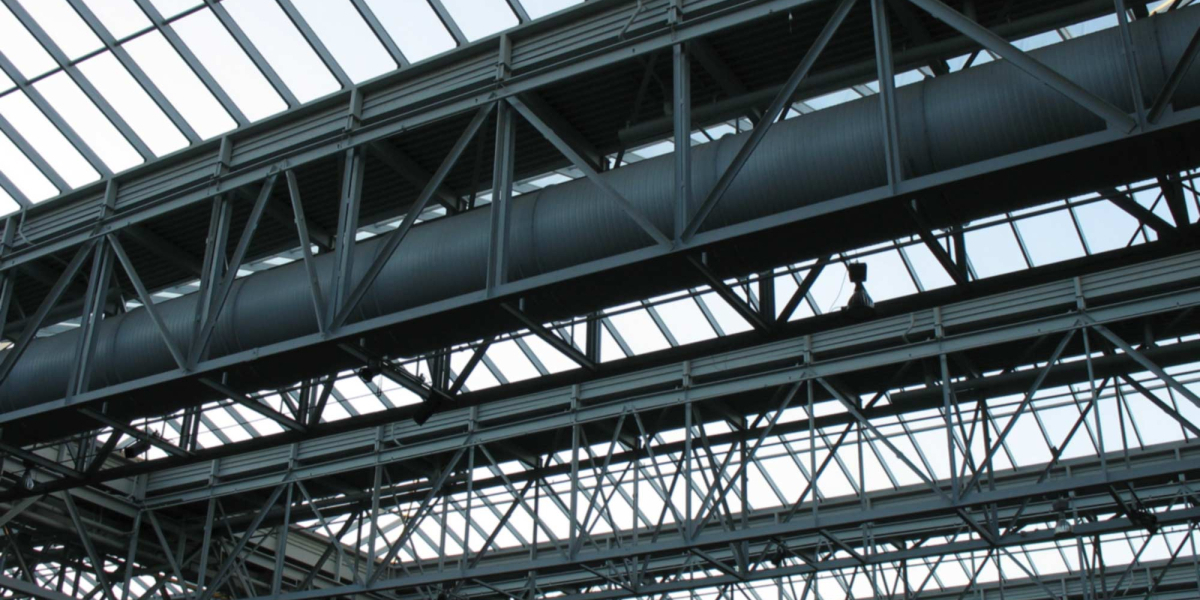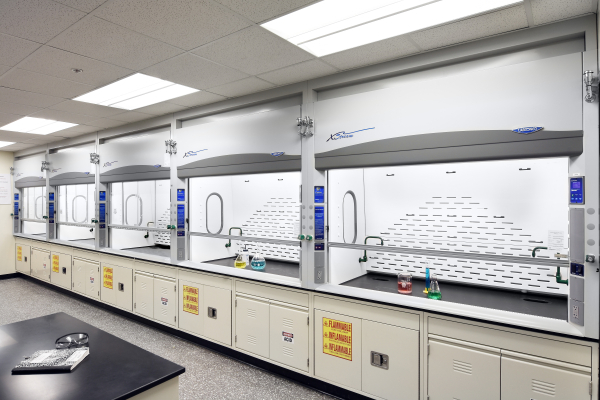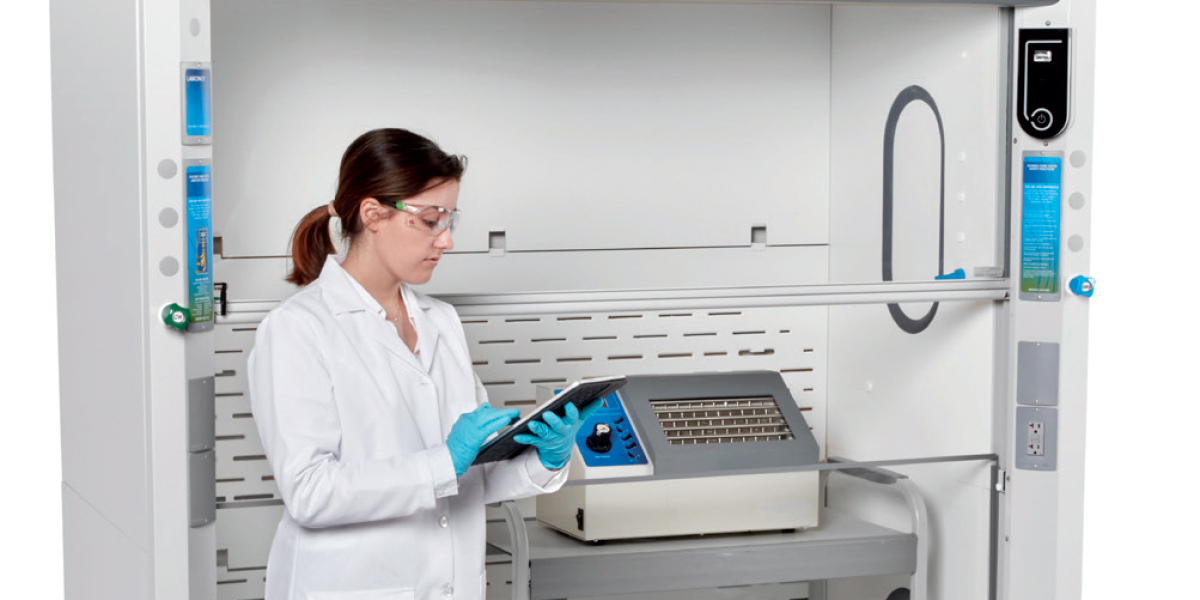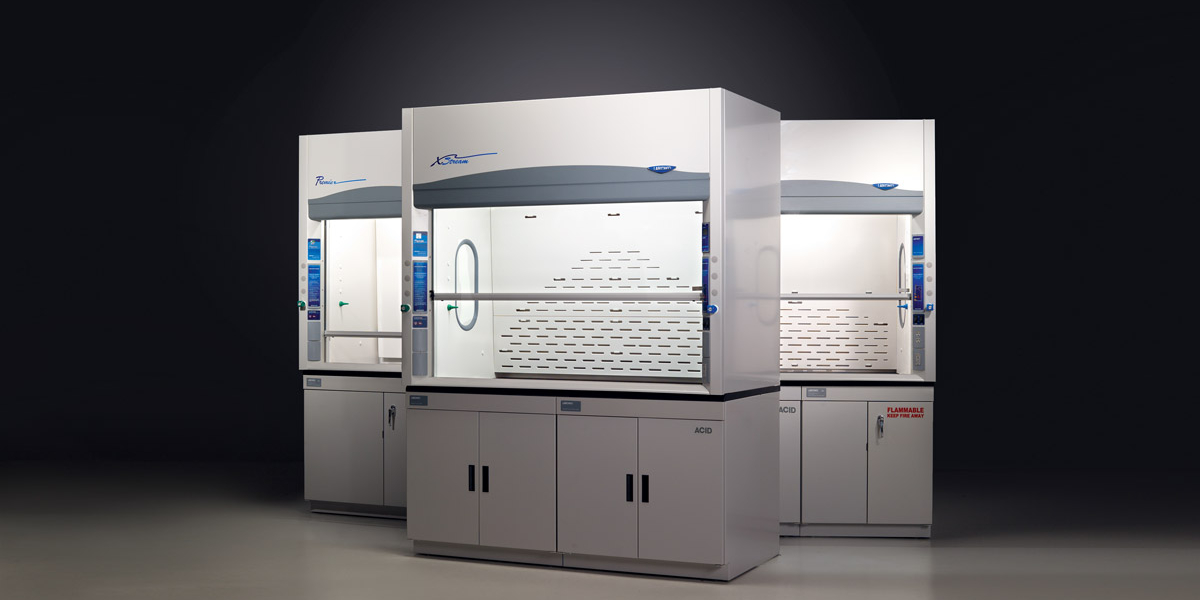Fume Hood Resources
Need a new fume hood and don’t know where to start? We’ve got you covered!
Many start-up laboratories and independent manufacturing companies quickly realize how daunting the task of selecting and installing a new fume hood can be. As they start their search, the amount of information required to not only select the fume hood, but have it installed and work appropriately in their space can be quite overwhelming. This article aims to serve as a starting point for that discussion and to provide links to other articles with more detail on specific topics relating to fume hoods and their functionality.
Remember, we are always here to help, so don’t hesitate to reach out by phone, email response form, or chat.
Creating Your Plan:
The first thing to consider is what you need the fume hood for. For example, what chemicals will you be working with and what (if any) equipment will be housed inside the fume hood. Assembling a list of chemicals, amounts used and stored, and any equipment related to those chemicals is required for a proper risk assessment and will help you get started on your chemical hygiene plan as required by the Occupational Safety and Health Administration (OSHA). This is the cornerstone of your chemical safety protocol. This will help you determine what engineering controls (fume hood, PPE, etc.) are required for your process.
If you already have a safety officer, they can help with this task. If needed, you may wish to consult with an Industrial Hygienist to help with the risk assessment, compliance with local codes and regulations, and help determine what engineering controls are required for your process. The links below provide more information on government requirements and standards for chemical handling and use.
-
Regulatory Standards:
- 1910.1450 - Occupational exposure to hazardous chemicals in laboratories. | Occupational Safety and Health Administration (osha.gov)
- Chemical Hazards and Toxic Substances - Overview | Occupational Safety and Health Administration (osha.gov)
- National Institute for Occupational Safety & Health | NIOSH | CDC
- NFPA 45: Standard on Fire Protection for Laboratories Using Chemicals UL Revision | UL 1805-
- Consultants Directory | AIHA
-
Labconco articles and videos:
Fume Hood Selection – HVAC and Ventilation Requirements:
Once your chemical hygiene plan is in place, you will know what engineering controls are required for your chemicals and processes, as well as how those engineering controls need to operate. For a fume hood, this would be the operational sash height (the opening of the fume hood, typically 18 or 28 inches) and the operational face velocity.
The face velocity requirement can range between 60-125+ fpm. The speed of the air will depend on the chemicals, volumes, and equipment in the fume hood. Two parameters, sash height and face velocity, will help determine how much air your fume hood requires. This is very important as your fume hood needs to work in conjunction with your HVAC system. Your fume hood will remove conditioned air from your workspace and thus will have to be replaced with adequate supply air from your HVAC system.
Our by-pass style fume hoods work well with both constant air volume and variable air volume (VAV) exhaust systems. The following links provide more information on how our high-performance fume hoods work in conjunction with the HVAC system and why choosing the correct operational conditions is important. We recommend working with a mechanical contractor (preferably with fume hood experience) to help design the exhaust system, ensure that it will work appropriately with your HVAC system, and ensure the exhaust stack meets all local building and environmental code requirements.
Regulatory Standards:
Testing Standards:
- ANSI/ASHRAE Standard 110-2016 - Methods of Testing Performance of Laboratory Fume Hoods
- Meet Manny (ASHRAE 110 Testing)
Video:

Labconco articles and videos:
- 3 ways to get the most out of a high performance lab ventilation system
- Reducing fume hood energy consumption
- We can prove it. Labconco Fume Hoods will save you money
- What type of ductwork do I need?
- Understanding High Efficiency Fume Hoods
- The Right Fume Hoods: The Building Blocks of Zero Net Energy (ZNE) Lab Design
- Sustainable lab planning: Changing fan speeds
- Zero Pressure Weathercap for vertical exhaust protection
- 4 Reasons You Should Use a Remote Blower Instead of a Built-In Blower
- 4 things you need to know about airflow monitors on chemical fume hoods
- Reducing Laboratory laboratory fume hood energy consumption, even at 100fpm face velocity!
- Know your options: Ducted vs. ductless fume hood selection
- Protector XStream Chemical Fume Hood
- Managing Lab Air with Chemical Fume Hoods
Fume Hood Selection – Hood Requirements:
You will want to make sure your fume hood meets your current needs, as well as plan for change. The size, liner material, service fixtures and accessories are all part of these considerations. The size of the fume hood size is fixed and can range anywhere from 30 inches wide to 16+ feet wide. Fume hoods come in various styles, such as benchtop or floor-mounted. Various liner materials are used inside fume hoods including, coated steel, fiberglass reinforced polyester (FRP), PVC and stainless steel.
Labconco fume hoods can hold up to 8 service fixtures, multiple duplex outlets, airflow monitors, sinks, distillation grids and more. Ensure that adding additional accessories is possible with the hood you select. This way you can adapt your fume hood to future needs as well. Field installation kits are available for most accessories. Ensure that the fume hood liner and electrical setup is compatible with your application.
Regulatory Standards:
Testing Standards:
Labconco articles and videos:

Fume Hood Selection – Hood Model:
Selecting the correct model of fume hood is much easier once all the information above is known. Labconco has several types of fume hoods, from ductless to ducted and from light- duty to very specific special application fume hoods. Even within our general chemistry style fume hoods, we offer 3 models to choose from. Your local Labconco representative or one of our application specialists can help point you in the right direction based on your application.
Labconco articles:
- The ins and outs of perchloric acid in the laboratory
- How to select the correct fume hood for your applications - Labconco
- 3 Explosion-Proof Fume Hood Myths
- Heat effect in fume hoods
- Does that lab really need an explosion-proof fume hood?
- Know your options: Ducted vs. ductless fume hood selection
- 8 questions to answer before shopping for a new fume hood
| chevron_left | Freeze Dry Resources: Make the best choices for your laboratory | Articles | Finding A Balance – Engineering Ergonomics for Microbiological Safety Cabinets | chevron_right |








